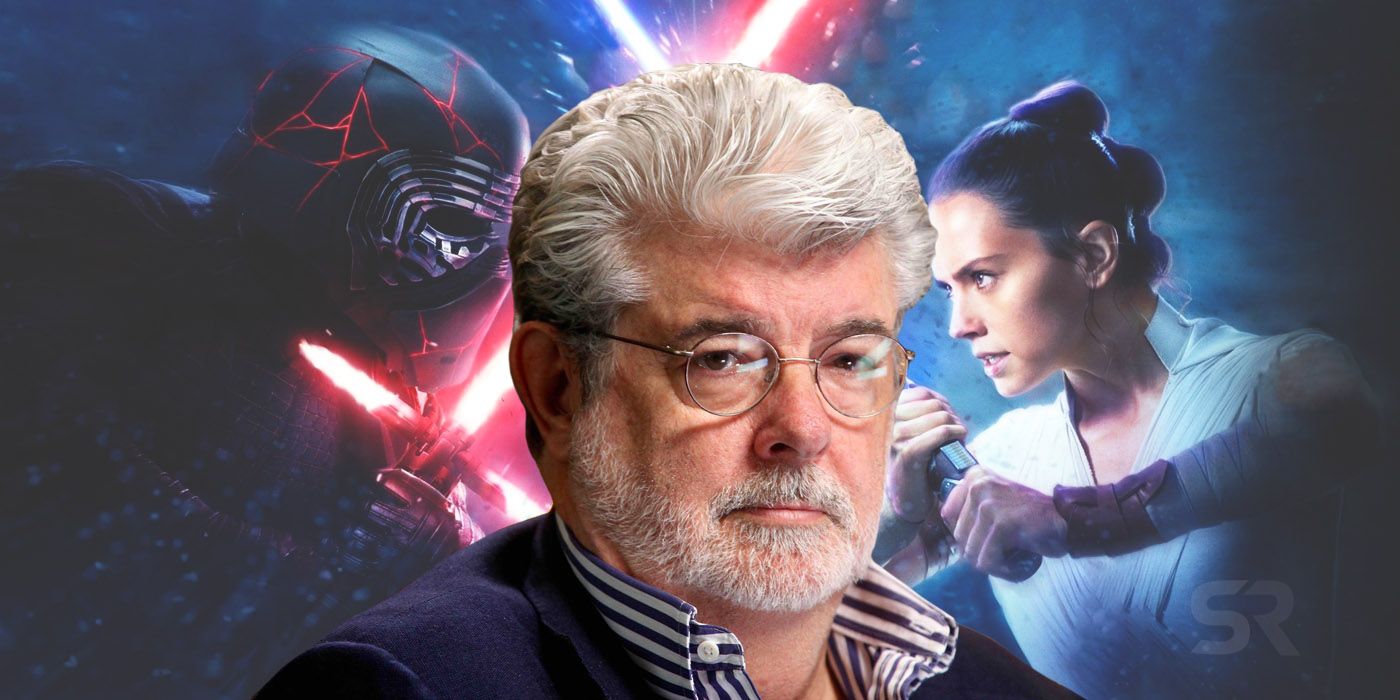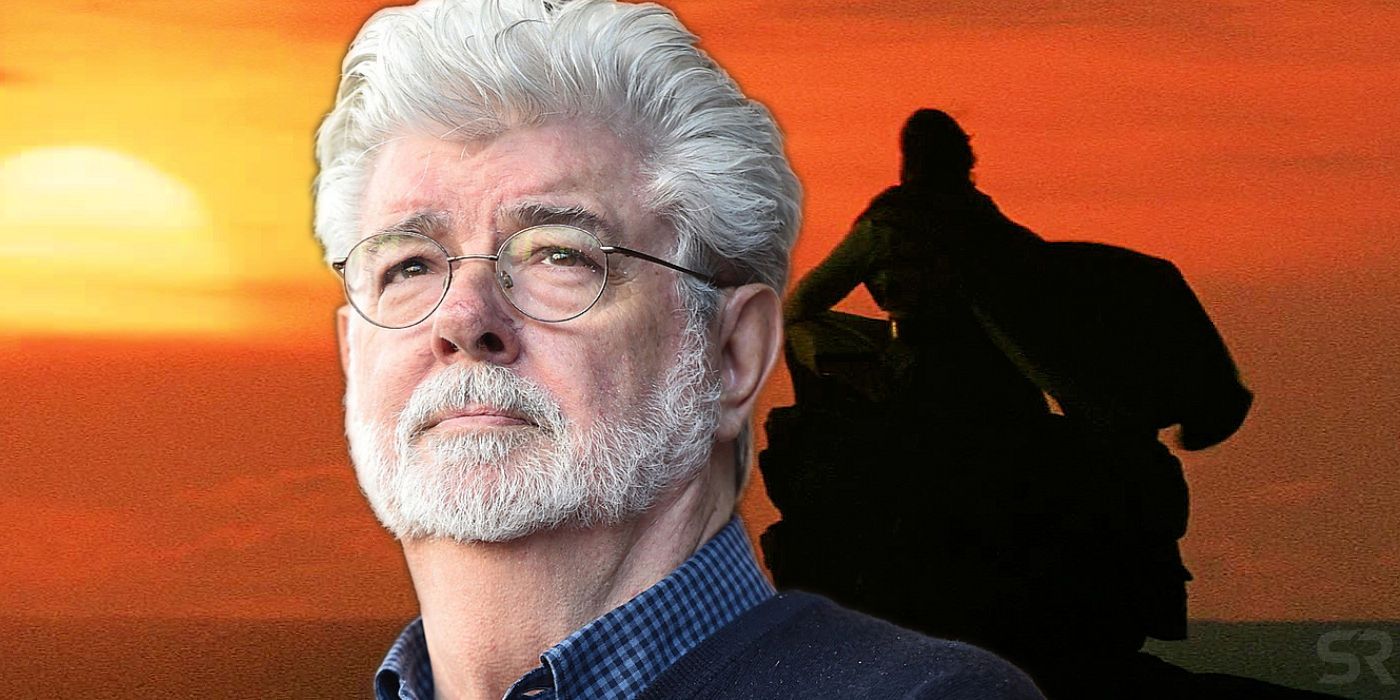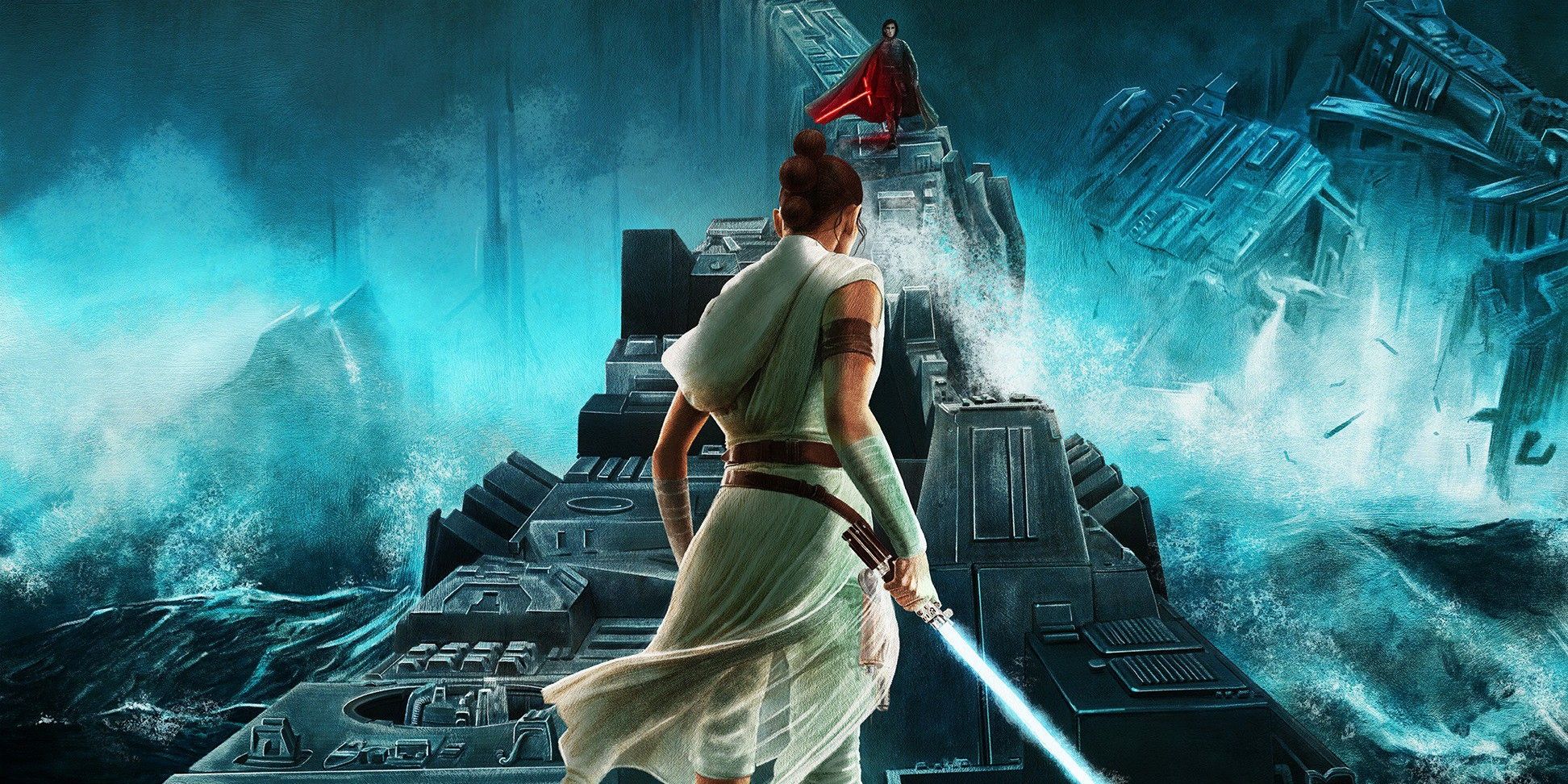
Star Wars: The Rise of Skywalker marks the end of the Skywalker saga, but it’s not the end of George Lucas’ story. After over 40 years of Skywalker history, J.J. Abrams’ Star Wars: The Rise of Skywalker brought together the original trilogy, the prequels, and the sequels in the Star Wars film saga. Of course, this film wasn’t safe from criticism, as it didn’t live up to the hype and the story ended up leaving more loose threads than it already had.
Star Wars: The Rise of Skywalker followed many stories at once: on one side of the galaxy, the Resistance was preparing for the final stand against the First Order, which turned out to have none other than Emperor Palpatine as mastermind. Meanwhile, Kylo Ren’s inner battle between both sides of the Force continued, as did Rey’s Jedi training with Leia as her new master. While the film addressed some of the biggest plot holes left by the previous sequels, and retconned many elements from Star Wars: The Last Jedi, it left many others unsolved, which is especially frustrating as this is the final chapter in the Skywalker saga.
But even though the sequel trilogy is a continuation of George Lucas’ original trilogy – and brought proper closure to Han Solo, Luke, and Leia – Star Wars: The Rise of Skywalker isn’t the ending of the story he crafted, and it’s very different from what he had in mind for the sequels.

George Lucas had plans for more than three Star Wars films before the original trilogy was complete. In 1978, he stated there would be ten Star Wars films after Star Wars: The Empire Strikes Back, but two years later he cut it down to seven. The story he had already planned was changed once he started working on Star Wars: Return of the Jedi, as he incorporated many elements from the sequels into the third entry in the original trilogy, but he still had a clear idea of what he wanted for a future sequel trilogy.
However, when he announced his plans to produce a prequel trilogy in the early 1990s, he insisted he had no plans to make a sequel one nor he would allow other directors to make it. During a press conference in 1997, Lucas even said he didn’t have scripts for the sequels, that the whole story has six episodes, and that if he ever went beyond that, “it would be something that was made up”. Ten years later, he reiterated that there wouldn’t be episodes VII to IX because there wasn’t any story, as “the Star Wars story is really the tragedy of Darth Vader”.
Of course, that changed when he decided to leave the franchise in the hands of others, and Disney acquired Lucasfilm in 2012. Lucas gave Kathleen Kennedy treatments for the sequels at the time, but his ideas were ultimately scrapped and Disney instead went for something different, introducing a new generation of characters (both from the light and dark sides of the Force) and with the original ones as mentors. Although they kept a couple of (minor) details from Lucas’ ideas, the Star Wars sequel trilogy isn’t the story Lucas had already planned.

Before Return of the Jedi happened, Lucas’ plans for a sequel trilogy included the reveal of Luke’s sister (not Leia, but a different character) and Emperor Palpatine’s first physical appearance. In addition to that, the sequels would have followed Luke’s life as a Jedi Knight, his return in a role “similar to that of Obi-Wan in the original trilogy”, and the rebuilding of the Republic. As mentioned above, these plans changed when Lucas started working on Return of the Jedi and incorporated many of these ideas into it, such as the reveal of Leia being Luke’s sister and the confrontation between Luke and Palpatine.
Even if Return of the Jedi ended up changing Lucas’ plans, he still had ideas for the sequels. Mark Hamill once revealed that among those plans were Luke training Leia in the ways of the Force and Luke’s death in Episode IX, which did happen though probably not as Lucas expected. Luke, who had a silent appearance in Star Wars: The Force Awakens at the very end of it, died in Star Wars: The Last Jedi and came back as a Force Ghost in The Rise of Skywalker, and Leia was revealed to have been trained by Luke, but this wasn’t explored at all and was only shown in a flashback. None of the sequels focused on Luke’s life as a Jedi Knight either, and the only looks at his life between Return of the Jedi and The Force Awakens were in visions and the flashback scene in Last Jedi where he told Rey what happened with Ben Solo/Kylo Ren.

George Lucas’ Star Wars story went through many changes at different points in time, and while Disney’s sequel trilogy ignored the core of his plans for the final trilogy, The Rise of Skywalker is still a proper ending to the saga. The sequels introduced a new generation of heroes (Rey, Finn, and Poe Dameron) and villains (Kylo Ren, General Hux, and Supreme Leader Snoke), and The Rise of Skywalker brought closure to their stories – whether they were well received by critics and audiences or not is a different story. The stories of the original heroes also came to an end, and R2-D2 and C-3PO ended up being the only characters to appear in all nine films, as Lucas intended.
Star Wars: The Rise of Skywalker also gave the Resistance a real win with the defeat of the First Order (and with that, the remnants of the Empire), and Rey’s rise as the only Skywalker and Jedi left viewers and the galaxy with a true feeling of hope. On the other hand, the film left a couple of things unsolved, such as the whereabouts of Luke’s green lightsaber, how his X-Wing magically repaired itself, and Finn’s Force sensitivity, which won’t be solved on the big screen but can be addressed in books and other (canon) media. Star Wars: The Rise of Skywalker isn’t what George Lucas had in mind, meaning it’s not ending his story, but it is the end of the Skywalker saga, and there won’t be any more adventures from that side of the galaxy.
from ScreenRant - Feed https://ift.tt/2Sw5PYE

0 Comments